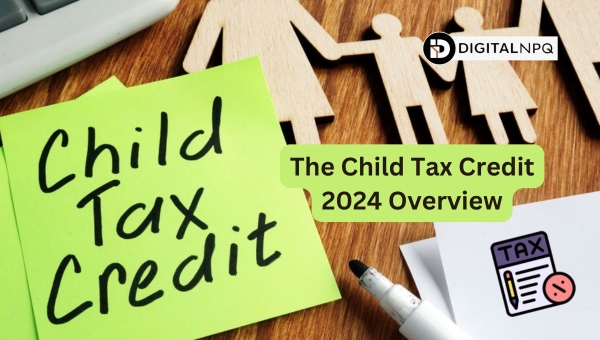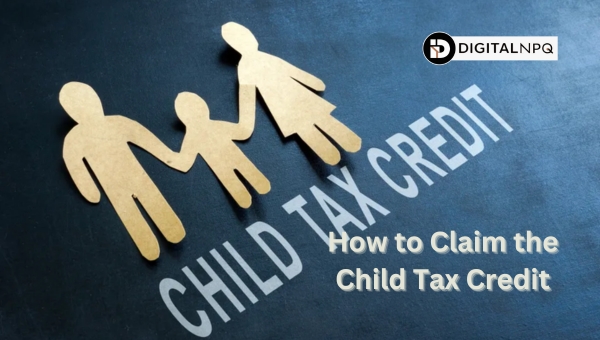CTC Payments 2024: Maximize Your Child Tax Credit

We’re here to make it easier to navigate the confusing world of CTC payments in 2024. The eligibility criteria, income restrictions, and crucial payment information are covered in detail in this article.
You’ll learn how to claim your credit, stay updated on recent changes, and avoid pitfalls. We’ll also explore state-specific variations and the consequences of errors. Ready to unlock the benefits of the Child Tax Credit? Let’s get started!
The Child Tax Credit 2024 Overview
The Child Tax Credit (CTC) for 2024 is an essential federal program designed to provide financial assistance to families with children.

It’s vital to understand the eligibility requirements, income limits, and restrictions to make the most of this benefit. Let’s delve into the details to ensure you are well-prepared to claim this credit.
Eligibility Requirements
To qualify for the Child Tax Credit in 2024, families must meet specific criteria.
Here’s a breakdown:
- Child’s Age: The child must be under the age of 17 at the end of the tax year.
- Residency: The child must be a U.S. citizen, national, or resident alien, and must live with the taxpayer for at least six months of the year.
- Dependent Status: The child must be claimed as a dependent on the tax return.
- Social Security Number: The child must have a valid Social Security number.
- Taxpayer Requirements: Parents or guardians must be taxpayers with a valid Social Security number.
Income Limits for Full Credit
Understanding the income limits is crucial for receiving the full Child Tax Credit amount in 2024.
Here are the thresholds:
- Single Taxpayers: Annual income up to $200,000 qualifies for the full credit.
- Married Filing Jointly: Annual income up to $400,000 qualifies for the full credit.
- Phase-Out: The credit begins to phase out for incomes exceeding these thresholds.
Age and Other Restrictions
There are several age and other restrictions to keep in mind for the Child Tax Credit:
- Age: The child must be under 17 by the end of the tax year.
- Proof of Dependency: The child must be claimed as a dependent on your tax return, meaning you provide more than half of their financial support.
- Social Security Number: Ensure the child has a valid Social Security number.
- Residency Requirement: The child must live with the taxpayer for more than half the year.
By understanding these fundamental aspects, you can navigate the Child Tax Credit for 2024 effectively and ensure you receive the benefits your family is entitled to.
How to Claim the Child Tax Credit?
Understanding how to claim the Child Tax Credit (CTC) can be a game-changer for families.

This section will guide you through the necessary steps for 2024, ensuring you know exactly what to do and when to do it.
Payment Details for 2024
Claiming your child tax credit is straightforward if you follow these steps:
- Gather Required Documents: Ensure you have your Social Security numbers, tax returns, and proof of dependency.
- Complete Tax Forms: File Form 1040 or 1040-SR, including all relevant information about your dependents.
- Submit Documentation: Attach any necessary documents that verify your eligibility.
- Review and Submit: Double-check your entries for accuracy before submitting your tax return.
Important Payment Dates
Key dates are crucial to remember when dealing with the Child Tax Credit.
Mark these dates on your calendar to stay on top of your payments:
- January 15, 2024: Start of payment processing.
- February 15, 2024: Second monthly payment.
- March 15, 2024: Third monthly payment.
- April 15, 2024: Fourth monthly payment.
- May 15, 2024: Fifth monthly payment.
- June 15, 2024: Sixth monthly payment.
- July 15, 2024: Seventh monthly payment.
- August 15, 2024: Eighth monthly payment.
- September 15, 2024: Ninth monthly payment.
- October 15, 2024: Tenth monthly payment.
- November 15, 2024: Eleventh monthly payment.
- December 15, 2024: Final monthly payment for the year.
How to Verify Your Payments?
Ensuring you’ve received your payments correctly is essential.
Here’s how to verify your CTC payments:
- Visit the IRS Website: Go to the official IRS website at www.irs.gov.
- Access Your Account: Log in to your account or create one if you don’t already have it.
- Check Payment Status: Navigate to the section where you can view your payment history.
- Match Against Records: Compare the received payments to your records and initial calculations to ensure accuracy.
- Contact IRS if Needed: If discrepancies are found, reach out to the IRS for clarification and resolution.
By following these steps, you can smoothly claim and verify your Child Tax Credit for 2024.
Also Read: Child Tax Increase 2024: What You Need to Know!
Recent Updates and Developments
Navigating the ever-evolving landscape of child tax credits can be challenging, but staying informed is crucial.

In this section, we will delve into the latest updates and developments to help you stay ahead.
Policy Changes and Announcements
The world of child tax credits has seen several recent modifications.
Here are the key changes you need to know:
- Income Threshold Adjustments: There have been talks about increasing the income limits for full credit eligibility. This means more families could qualify for the maximum benefit.
- Expanded Age Limits: Some proposals suggest extending the age limit for qualifying children beyond 17, allowing more families to benefit.
- Monthly Payment Options: Discussions are ongoing about the possibility of monthly disbursements, providing more consistent financial support throughout the year.
Fact-Checking Rumors
With so much information circulating, it’s essential to separate fact from fiction.
Here are a few common myths and the truths behind them:
- Special One-Time Payments: Contrary to some rumors, there are no approved special one-time payments of $1,000 for July 2024. Always verify any such claims with official sources.
- Automatic Enrollment: Not all families will be automatically enrolled in the child tax credit program. It is important to ensure that you meet all eligibility criteria and file the necessary paperwork.
- Universal Eligibility: There is a misconception that every family with children qualifies for the child tax credit. Eligibility still depends on income, age of the child, and other factors.
By staying updated with the latest policy changes and debunking common myths, you can ensure that you are fully prepared to claim the benefits you deserve.
Consequences of Errors and Audits
Errors in calculating or claiming Child Tax Credit (CTC) payments can lead to significant issues, including audits by the IRS. It’s crucial to understand the potential impacts to avoid these pitfalls:
Potential Impacts of Errors
- Delayed Payments:
- Incorrect information can cause delays in receiving your CTC payments.
- The IRS needs accurate data to process payments on time.
- Reduced Credit Amount:
- Errors might result in receiving a lesser amount than you’re entitled to.
- Ensure all details are accurate to maximize your credit.
- Penalties and Interest:
- Incorrect claims can lead to penalties.
- Interest may accrue on any overpaid amounts that need to be returned.
Audits by the IRS
- Triggering an Audit:
- Discrepancies in your tax return can trigger an IRS audit.
- Consistently accurate filings help avoid this scrutiny.
- Documentation Requirements:
- During an audit, you’ll need to provide proof of eligibility and accurate claims.
- Keep all relevant documents, such as birth certificates and Social Security cards.
- Time and Stress:
- Audits can be time-consuming and stressful.
- Accurate initial filings can save you from this hassle.
Steps to Avoid Errors
- Double-Check Information:
- Verify all information before submitting your tax return.
- Pay close attention to Social Security numbers and income details.
- Use Reliable Software:
- Use reputable tax preparation software.
- These tools often have built-in checks to catch common errors.
- Consult a Tax Professional:
- Seek help from a tax professional if you’re unsure.
- They can provide guidance and ensure your return is accurate.
Also Read: How Many Work Days in a Year: A Complete Guide
State Variations in Child Tax Credits
When considering child tax credits, it’s essential to recognize that states may have their own rules and benefits.
These state-specific differences can significantly impact who qualifies and how much they receive. Here are some key variations to be aware of:
States Offering Additional Credits
Some states provide additional child tax credits on top of the federal credit.
These states include:
- California: Offers a Young Child Tax Credit for qualifying families with children under the age of six.
- New York: Provides an Empire State Child Credit, which is available to residents with children aged four to sixteen.
Income Eligibility Differences
Income limits can vary by state, which affects who qualifies for additional credits. For example:
- Colorado: Has income limits that are lower than the federal threshold, making it more restrictive for higher-income families.
- Vermont: Offers a progressive child tax credit where the amount decreases as income increases, ensuring that lower-income families receive more support.
Age and Dependency Requirements
Age and dependency rules can also differ between states. Consider the following:
- Massachusetts: Extends child tax credits to children up to the age of eighteen, beyond the federal limit of seventeen.
- Minnesota: Requires proof of school enrollment for children over the age of sixteen to qualify for state credits.
Application Processes
The application process for state credits may be different, which can affect how quickly families receive benefits.
Examples include:
- Oregon: Requires a separate state tax form to be filled out in addition to the federal tax return.
- Maryland: Automatically calculates and applies state credits when residents file their state tax return, simplifying the process.
Impact on Total Benefits
The additional state credits can significantly enhance the overall financial support received by families. For instance:
- Utah: Offers a refundable state child tax credit, meaning that even families who owe no state taxes can still receive a cash benefit.
- Arkansas: Provides a non-refundable credit, which only reduces the amount of state tax owed but does not result in a direct payment if the credit exceeds the tax liability.
Understanding these state-specific differences is crucial for families aiming to maximize their child tax credit benefits. Ensure you check your state’s regulations to determine eligibility and the potential amount you can receive.
FAQs
Is the IRS giving monthly payments for kids in 2024?
Yes, the IRS is continuing to provide monthly payments for the Child Tax Credit in 2024. Payments are typically distributed on the 15th of each month.
How do I get a 3600 child tax credit?
To receive the $3,600 Child Tax Credit, you need to meet specific eligibility criteria, including income limits and having a qualifying child under age 6. Ensure you file your taxes correctly and provide all necessary documentation.
What are the tax changes for 2024?
For 2024, there are updates to income limits and eligibility requirements for the Child Tax Credit. It’s important to stay informed about these changes by checking the IRS website or consulting a tax professional.
Conclusion
In summary, understanding the Child Tax Credit for 2024 is essential for families aiming to maximize their financial benefits. By staying informed about eligibility requirements, income limits, and necessary documentation, you can ensure a smooth process when claiming your credit.
Moreover, keeping track of important payment dates and recent updates will help you stay ahead of any changes. Accurate information is key to avoiding errors and potential audits.
To learn more about managing your finances and staying updated on tax credits, make sure to explore more of our insightful blogs. Your financial well-being is just a click away!
